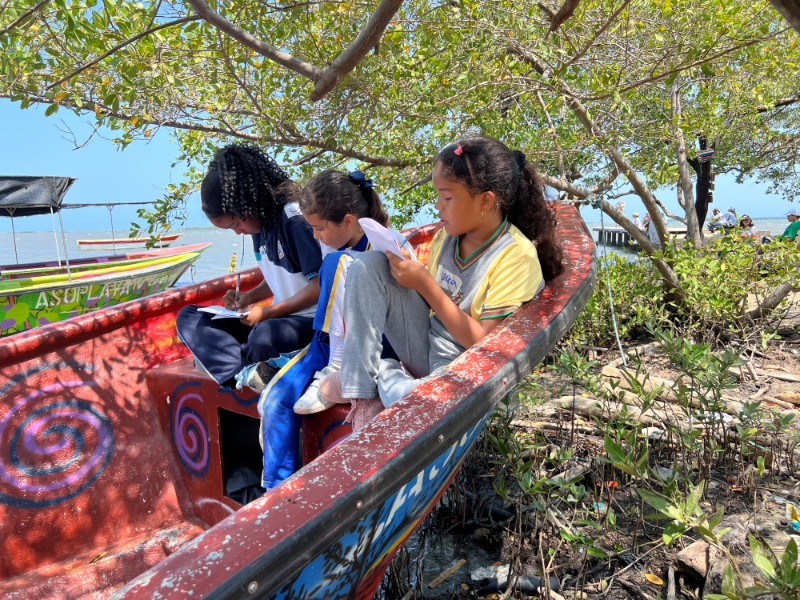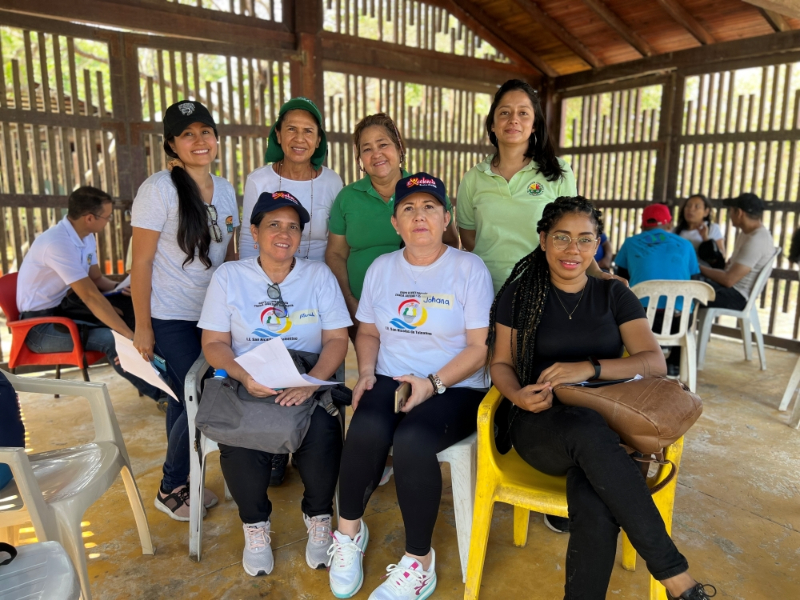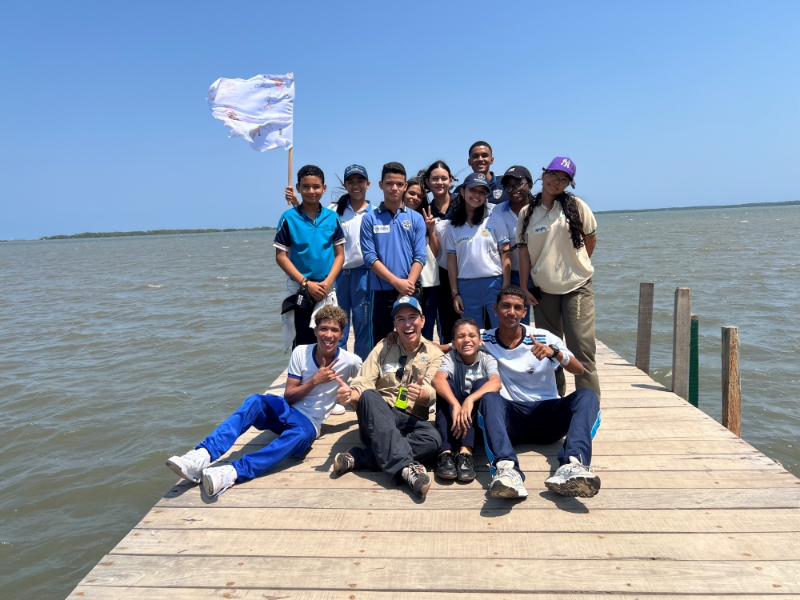An educational and collaborative community

Unique Genius: work in the experience journal to reflect on the unique being that we are. How do you recognise your inner wisdom? How do you represent your energy and passion? How do you represent your home? Ciénaga de Mallorquín- Colombia. Credit - Sergio Borrero.
An educational and collaborative community promoting ecosystem identity and conservation
The Ciénaga de Mallorquín belongs to a wetlands complex in the Colombian Caribbean and the Ciénaga Grande de Santa Marta. It is a vital ecosystem for conservation due to its hosting a great diversity of migratory birds and mangroves, which help mitigate climate change and prevent coastal erosion. Despite its environmental significance, its cultural and natural value had long been overlooked by Barranquilla's local government and residents.
Historically, the Ciénaga has provided refuge to vulnerable populations, including fishers and merchants impacted by urban growth and displacement. Despite socio-environmental degradation, it remains a crucial geographical link, connecting the Magdalena River to the Caribbean Sea and holding significant development potential for the region. Local fishers and residents promote its revitalisation, recognising its vital role in biodiversity conservation. Queene Terán, a teacher at Institución Educativa Distrital (IED) Las Flores, reveals that the education sector is also committed to protecting these ecosystems: “Let's remember that this mangrove ecosystem helps us to have some mitigation, for example against soil erosion”.

In 2022, the Organization for Environmental Education and Protection (OpEPA) initiated a collaborative network of schools to promote the use of key ecosystems as learning environments in several cities of the country. By 2023, this initiative evolved into the Dulce Sal Schools Network, the perfect combination where the maritime and terrestrial worlds meet through the river. The Ciénaga de Mallorquín was identified as a key setting, not only for its ecosystem services but also as a learning environment that fosters a connection with nature.
Initial visits and interviews revealed that many teachers and principals were unfamiliar with the Ciénaga or saw it as distant and dangerous. They expressed a need for new methodologies to engage with the ecosystem and empower children and young people in biodiversity and environmental actions for their city.
"The network and its educational processes are a highly replicable model that can be established in several Colombian and Latin American cities with forgotten ecosystems that have potential for their services to society."
The goal was to motivate connection through outdoor activities using a nature-based education approach, including experiential methodologies. This approach addresses the city's environmental and relational issues by helping individuals recognise their personal and collective purposes. As Pastora Chávez, a teacher at IED El Cañahuate, states: "Nature-based education is extremely valuable, especially in the current times we are living in, because it provides the vital connection we need to care for our common home”.
Over 30 educational institutions were visited to identify motivations beyond school projects, revealing a strong desire for environmental action and leaving a lasting impact on their students despite existing barriers. This highlighted the need for new methodologies to engage with the territory and empower children and youth in biodiversity and environmental actions.
The Dulce Sal Schools Network has built a community of educators who have developed an action plan and governance structure based on self-organisation and self-management. Through regenerative leadership, teachers and students have been empowered in the principles of life applied to social systems. Katherine Parrado from IED San Vicente de Paul reflects: "The network has helped me to have more confidence in myself and as a teacher. It has opened up a space for me to realise that I am indeed a leader. I am a leader among my students and among my fellow teachers. I have learned to have a bit more confidence in my voice."

Environmental projects in the network are developed through geographic nodes, generating an impact that extends beyond school walls by involving the community. The Dulce Sal Network reaches students as well, fostering a new generation of environmental agents. Juan D. Bolaños, a student from IED Nuestra Señora del Rosario, shares: "I got to know its surroundings and its biodiversity, and I was able to share with other classmates from different schools". This testimonial highlights how the project strengthens ownership of the local ecosystem and creates opportunities for collaboration and knowledge-sharing across different schools.
Capacity building started with a focus on the "Self," recognising the social diversity and inclusiveness of all participants, which allowed for understanding their dreams and connection to their territory. This evolved into fostering relationships based on cooperation, interdependence, and teamwork, leading to a systemic vision of the territory and nature appropriation. This work established the first thematic axis of the network: biodiversity conservation, promoting environmental education and the conservation of the Ciénaga de Mallorquín and surrounding ecosystems through local species study.
The second thematic axis focuses on the integral management of solid waste and the circular economy, aiming to improve school environments by transforming mindsets and using waste as useful and profitable resources.

The third axis is the adaptation of school environments to enhance connectivity, climate resilience, and biodiversity. This involves innovatively transforming educational spaces with gardens, green walls, green roofs, and trees, thus improving community quality of life and learning conditions. Network partners aim for their schools to become laboratories for building green and biodiverse cities.
Finally, one of the purposes of the Dulce Sal Network is to establish participatory leadership focused on shared goals. Currently, more than 20 educational institutions, 26 teachers, 90 children and youth, and 13 allied institutions have assumed these leadership roles, working on viable and sustainable projects with an emphasis on green businesses. The network and its educational processes are a highly replicable model that can be established in several Colombian and Latin American cities with forgotten ecosystems that have potential for their services to society. In this case, through territorial appropriation, efforts are being made to conserve biodiversity and improve the quality of life for citizens through children and youth who dream of transforming their environments.
Written by Andrés Pérez, Laura Sandoval, Luisa Castellanos, and Pilar Gómez. For more information on this Darwin Initiative Capability & Capacity project DARCC031, led by the Organization for Environmental Education and Protection (OpEPA), please click here.

 Back
Back